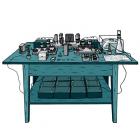Nuclear fission is an example of how “small” scientific discoveries can have profoundly destructive consequences for the entire globe. The discovery of the nuclear chain reaction in a lab enabled the construction of atomic bombs and nuclear power plants—something never intended by the scientists. Science cannot absolve itself of responsibility. Research should be guided by the principle of sustainable development: each generation must act in such a way that preserves natural resources and living conditions without endangering future generations. This ensures that all people can live together and enjoy economic and social stability. In the Anthropocene, this principle is more important than ever.
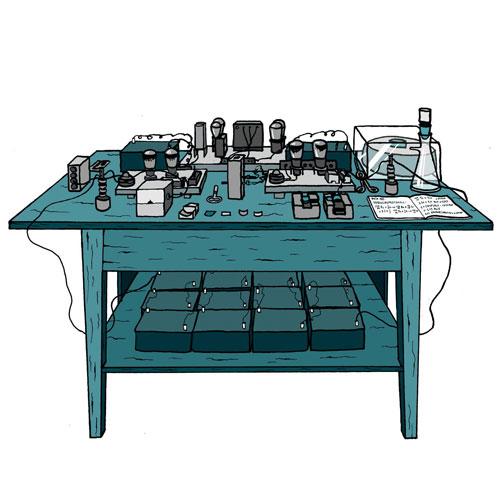
Nuclear Fission - Original instruments by Otto Hahn, Lise Meitner and Fritz Straßmann: „Hahn-Meitner-Tisch“, Inv.-Nr.: 1952/71930
Christian Lindemann
Nuclear Fission - Original instruments by Otto Hahn, Lise Meitner and Fritz Straßmann: „Hahn-Meitner-Tisch“, Inv.-Nr.: 1952/71930
Christian Lindemann
Drawn by Christian Lindemann , 2014.  This work is licensed under a Creative Commons Attribution-NonCommercial-NoDerivatives 4.0 International License.
This work is licensed under a Creative Commons Attribution-NonCommercial-NoDerivatives 4.0 International License.
Nuclear fission
Text and images by Christian Lindemann
University of the Arts (UdK), Berlin
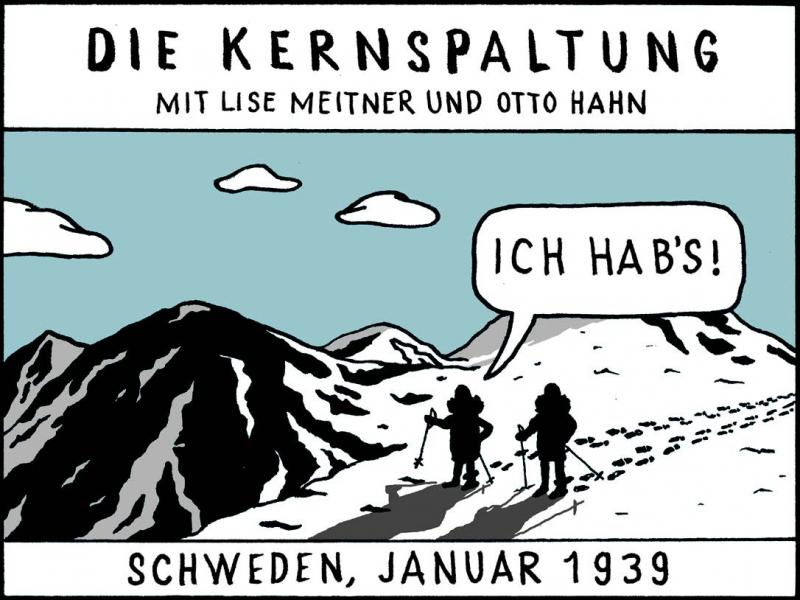
Nuclear Fission with Lise Meitner and Otto Hahn
“I’ve got it!”
Sweden, January 1939
Nuclear Fission with Lise Meitner and Otto Hahn
“I’ve got it!”
Sweden, January 1939
Drawn by Christian Lindemann , 2014.  This work is licensed under a Creative Commons Attribution-NonCommercial-NoDerivatives 4.0 International License.
This work is licensed under a Creative Commons Attribution-NonCommercial-NoDerivatives 4.0 International License.
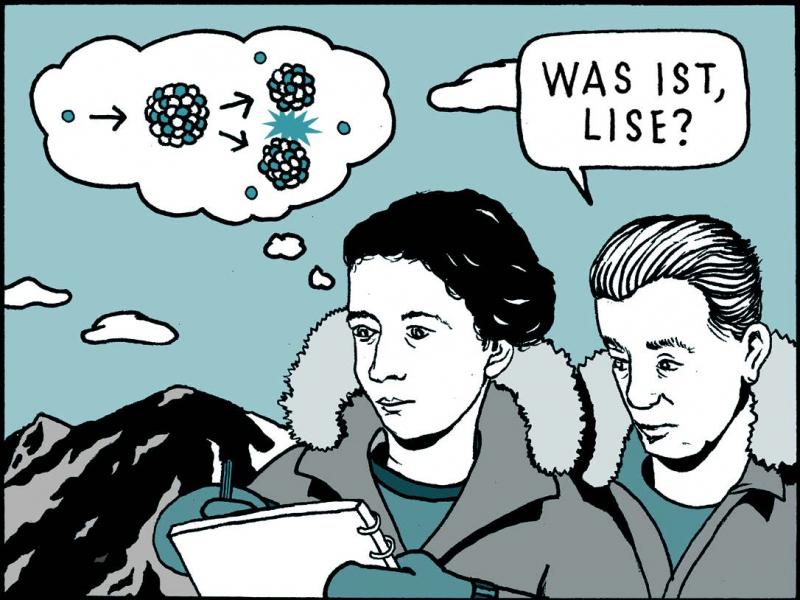
“What’s going on, Lise?”
“What’s going on, Lise?”
Drawn by Christian Lindemann , 2014.  This work is licensed under a Creative Commons Attribution-NonCommercial-NoDerivatives 4.0 International License.
This work is licensed under a Creative Commons Attribution-NonCommercial-NoDerivatives 4.0 International License.

“Oh… mail from Sweden from Lise: “Dear Otto, you split the atom in your experiments!”
Shortly after in Berlin
“Oh… mail from Sweden from Lise: “Dear Otto, you split the atom in your experiments!”
Shortly after in Berlin
Drawn by Christian Lindemann , 2014.  This work is licensed under a Creative Commons Attribution-NonCommercial-NoDerivatives 4.0 International License.
This work is licensed under a Creative Commons Attribution-NonCommercial-NoDerivatives 4.0 International License.
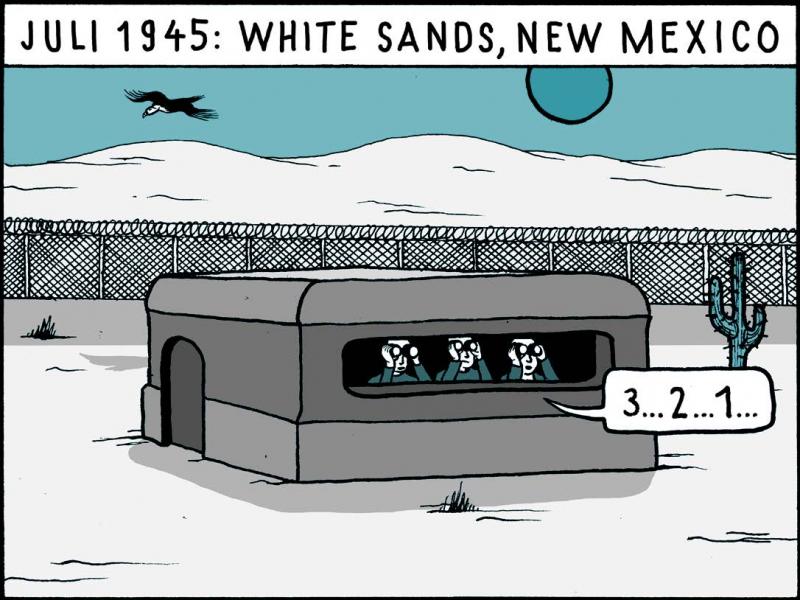
July 1945: White Sands, New Mexico
July 1945: White Sands, New Mexico
Drawn by Christian Lindemann , 2014.  This work is licensed under a Creative Commons Attribution-NonCommercial-NoDerivatives 4.0 International License.
This work is licensed under a Creative Commons Attribution-NonCommercial-NoDerivatives 4.0 International License.
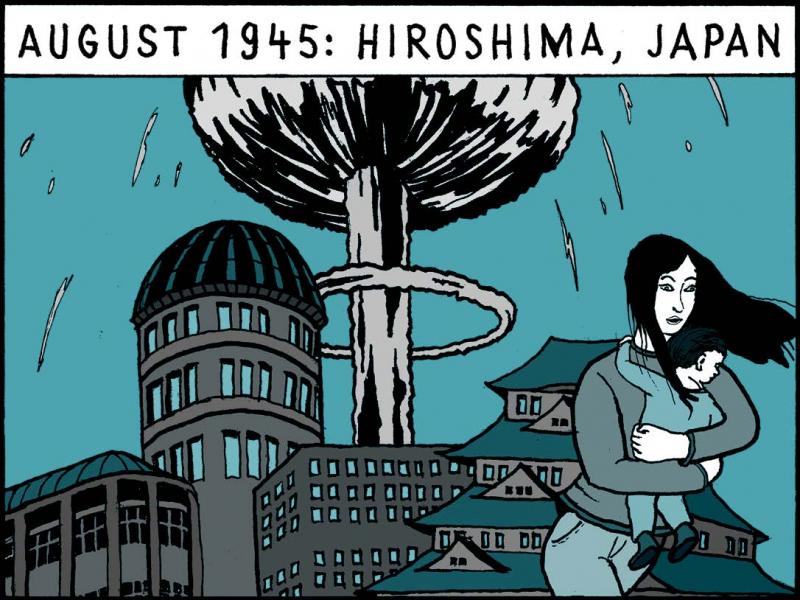
August 1945: Hiroshima, Japan
August 1945: Hiroshima, Japan
Drawn by Christian Lindemann , 2014.  This work is licensed under a Creative Commons Attribution-NonCommercial-NoDerivatives 4.0 International License.
This work is licensed under a Creative Commons Attribution-NonCommercial-NoDerivatives 4.0 International License.

March 2011: Fukushima, Japan
March 2011: Fukushima, Japan
Drawn by Christian Lindemann , 2014.  This work is licensed under a Creative Commons Attribution-NonCommercial-NoDerivatives 4.0 International License.
This work is licensed under a Creative Commons Attribution-NonCommercial-NoDerivatives 4.0 International License.

“Traces of radioactive contamination in the environment have been clearly measured in remote places. The rate of radioactive contamination is rising globally.”
“Traces of radioactive contamination in the environment have been clearly measured in remote places. The rate of radioactive contamination is rising globally.”
Drawn by Christian Lindemann , 2014.  This work is licensed under a Creative Commons Attribution-NonCommercial-NoDerivatives 4.0 International License.
This work is licensed under a Creative Commons Attribution-NonCommercial-NoDerivatives 4.0 International License.
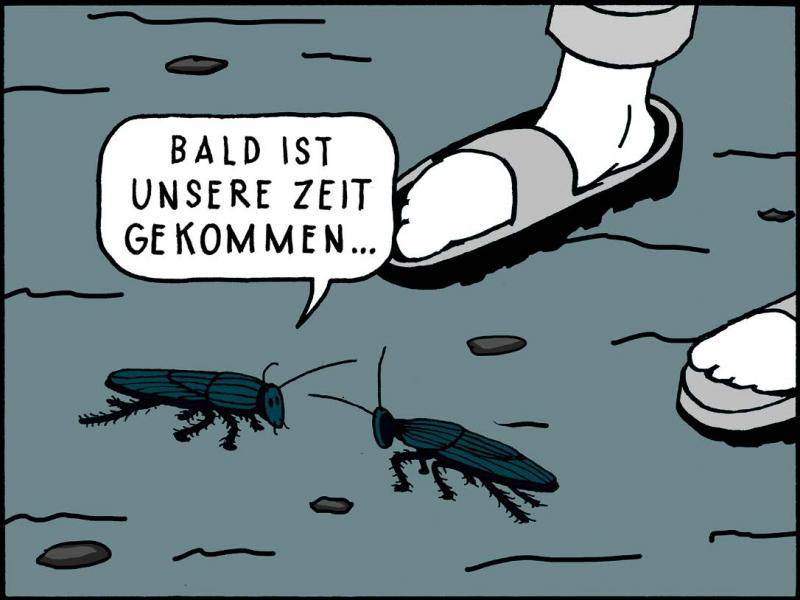
“Soon our time will come…”
“Soon our time will come…”
Drawn by Christian Lindemann , 2014.  This work is licensed under a Creative Commons Attribution-NonCommercial-NoDerivatives 4.0 International License.
This work is licensed under a Creative Commons Attribution-NonCommercial-NoDerivatives 4.0 International License.
Artist’s comment
Humans are trying to harness nature’s power and use it for themselves. However, the use of nuclear energy has numerous problems. And in the case of atomic weapons, we must all hope that we never have another world war. Einstein once said: “The release of atomic energy has not created a new problem. It has merely made more urgent the necessity of solving an existing one.”
How to cite
Lindemann, Christian. “Nuclear Fission.” Environment & Society Portal, Multimedia Library, 2014. http://www.environmentandsociety.org/node/6654/.
The comic also appears in Alexandra Hamann, Reinhold Leinfelder, Helmuth Trischler, and Henning Wagenbreth, eds., Anthropozän – 30 Meilensteine auf dem Weg in ein neues Erdzeitalter. Eine Comic-Anthologie (Munich: Deutsches Museum, 2014).
This work is licensed under a Creative Commons Attribution-NonCommercial-NoDerivatives 4.0 International License.


